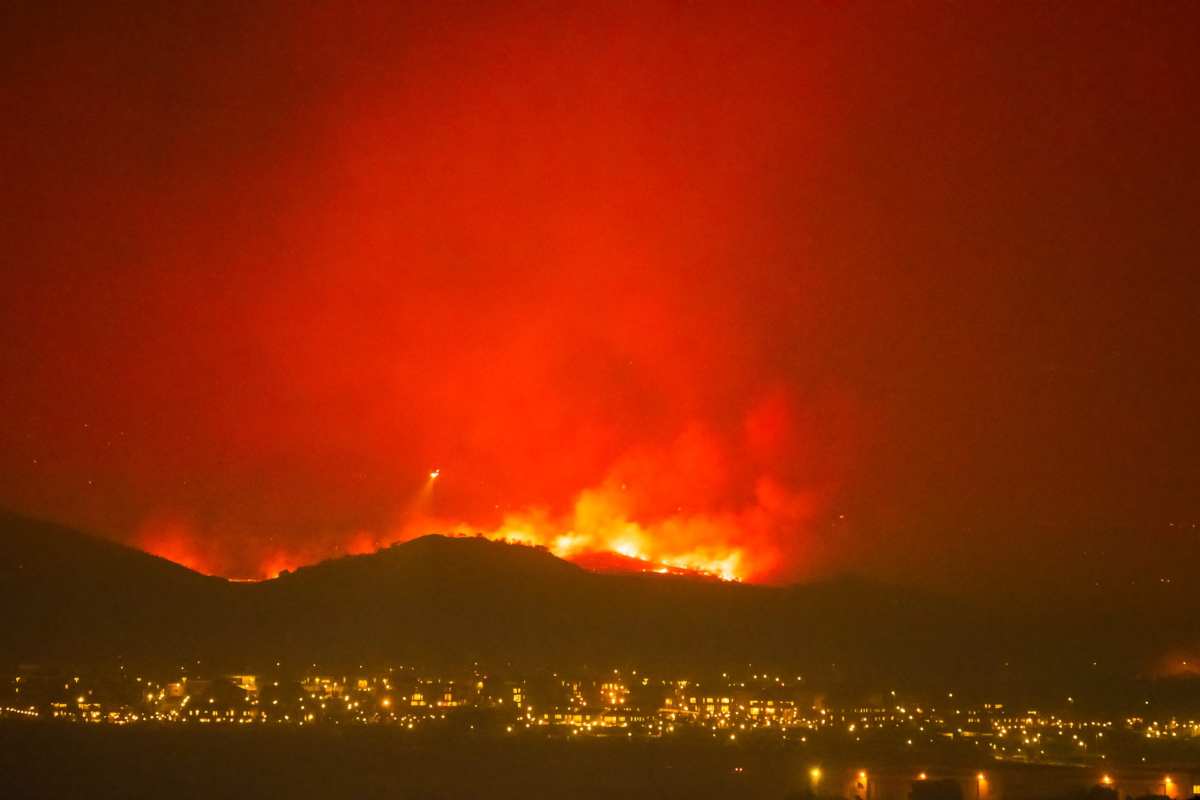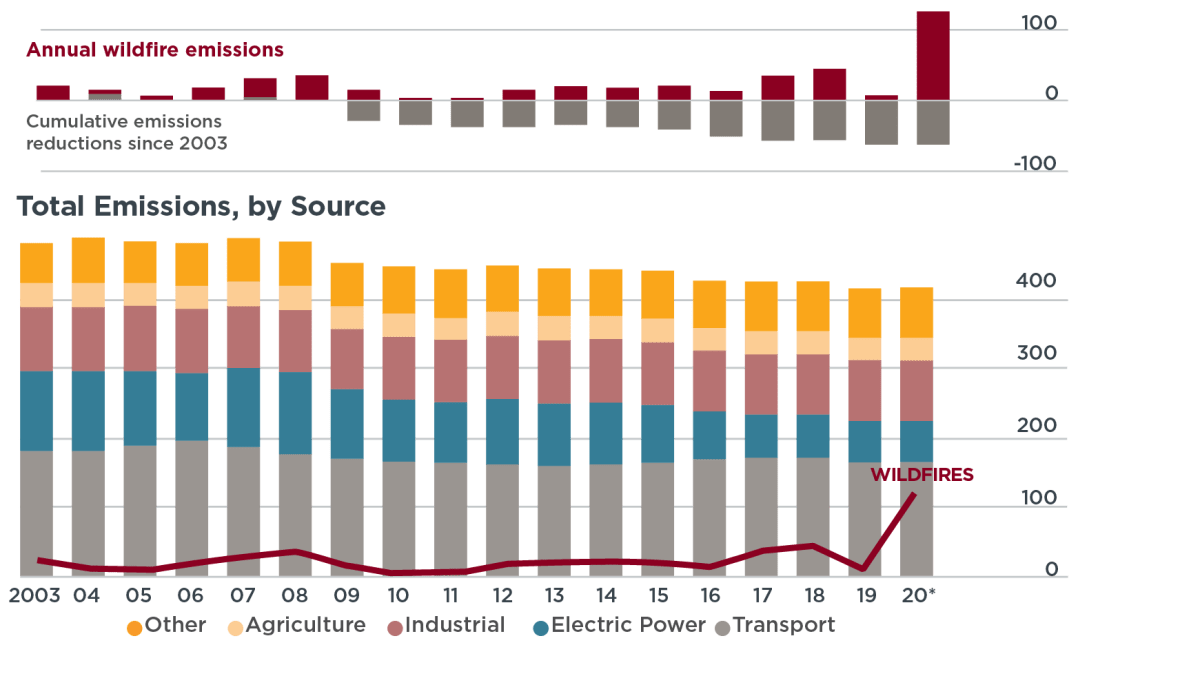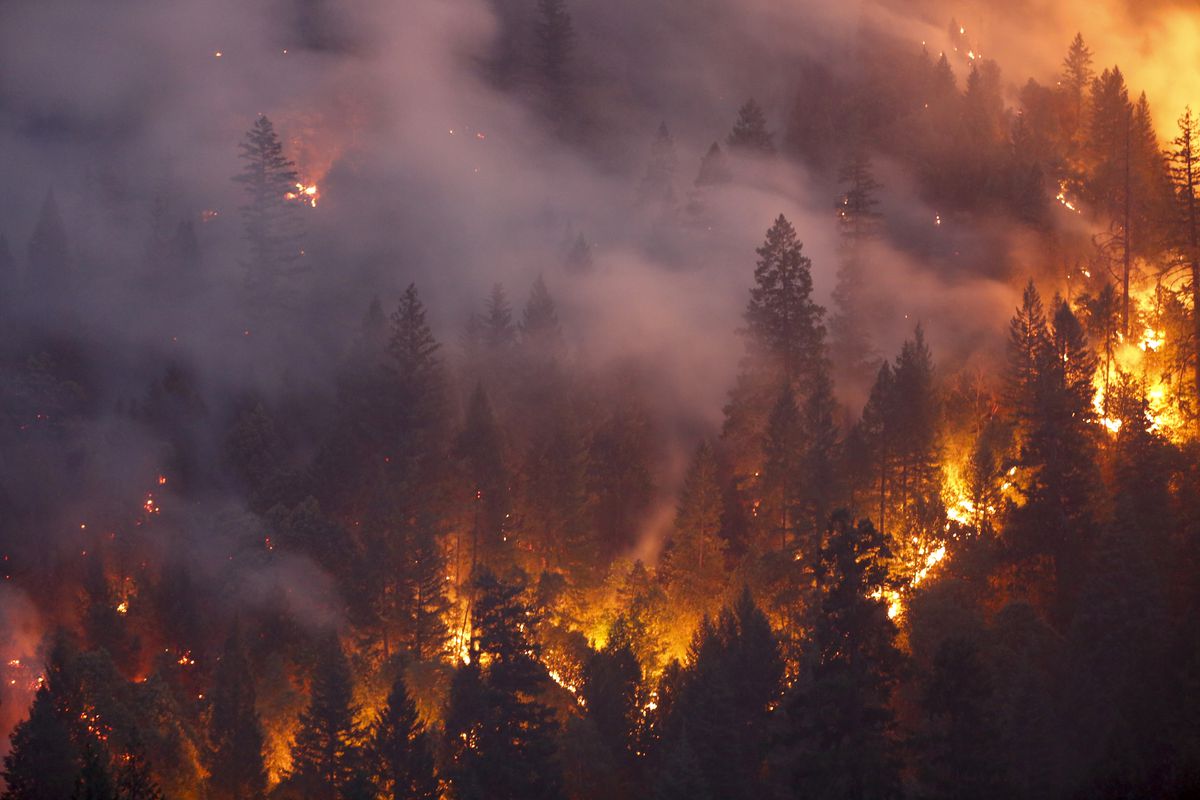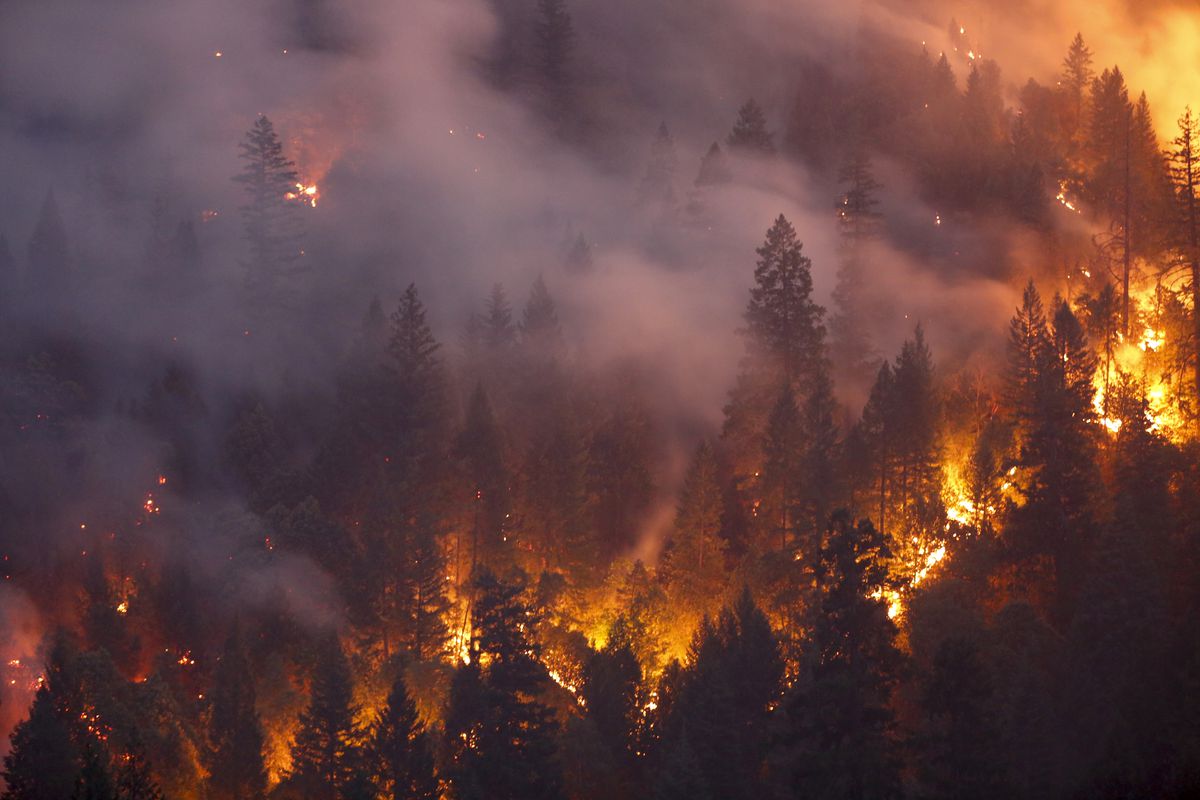Climate change: What role is it playing in the California fires? The answer is increasingly clear: a significant one. California’s wildfire season is getting longer, hotter, and more intense, fueled by a perfect storm of rising temperatures, prolonged droughts, and shifting wind patterns—all exacerbated by climate change. This isn’t just about bigger fires; it’s about a fundamentally altered landscape, where even the types of plants growing are changing, creating more fuel for these devastating blazes.
We’ll explore how climate change is impacting vegetation, creating drier, more flammable conditions. We’ll also examine how extreme weather events, like heatwaves and lightning storms, are becoming more frequent and intense, directly igniting and spreading wildfires. Finally, we’ll look at the challenges this presents to firefighting efforts and the adaptation strategies needed to combat this growing threat.
Climate Change and California Wildfires
California’s wildfire season has become increasingly severe, with larger, more frequent, and more destructive fires in recent decades. This intensification is inextricably linked to climate change, which is altering the state’s environment in ways that create a perfect storm for devastating wildfires.
Rising Temperatures and Wildfire Risk
Higher temperatures, a hallmark of climate change, directly increase wildfire risk. Warmer temperatures dry out vegetation, turning forests and grasslands into tinderboxes. This heightened flammability means that even a small spark can quickly escalate into a large and uncontrollable fire. The longer and hotter summers experienced in California contribute significantly to this increased risk.
California’s wildfires are getting worse, fueled by climate change’s impact on drier conditions and hotter temperatures. Think about how intense these fires are; it’s a stark contrast to today, where, as reported in this article, Mail service is suspended, and trading floors are silent, in honor of a significant event. The severity of these fires highlights the urgent need to address climate change and its devastating consequences on our environment.
Drought Conditions and Wildfire Fuel
Climate change is exacerbating drought conditions in California, leading to prolonged periods of dryness. This lack of moisture makes vegetation incredibly susceptible to ignition and rapid fire spread. Drought-stressed trees and plants are more vulnerable to pests and diseases, further weakening them and making them easier to burn. The resulting increased fuel load contributes to larger and more intense wildfires.
Wind Patterns and Wildfire Spread
Changes in wind patterns, potentially influenced by climate change, play a crucial role in wildfire behavior. Stronger and more erratic winds can rapidly spread flames over vast distances, making it extremely difficult to contain fires. These unpredictable wind shifts can also create fire whirls and erratic fire behavior, increasing the danger to firefighters and communities.
Trends in California Wildfire Frequency and Intensity
Over the past few decades, California has witnessed a clear upward trend in both the frequency and intensity of wildfires. Larger fires, burning over hundreds of thousands of acres, are becoming increasingly common. The length of the wildfire season has also expanded, with fires starting earlier in the spring and lasting later into the fall.
Vegetation and Fuel Load Changes: Climate Change: What Role Is It Playing In The California Fires
Climate change is altering California’s vegetation, making it more susceptible to fire. Changes in precipitation patterns and rising temperatures are impacting the types of plants that thrive in the state, leading to shifts in fuel loads and flammability.
Impact of Climate Change on Vegetation Flammability
Rising temperatures and altered precipitation patterns are causing a shift towards drier, more flammable vegetation types in many parts of California. This includes an increase in the prevalence of invasive grasses and shrubs that are highly combustible. The reduction in moisture content of existing vegetation further increases the risk of ignition and rapid fire spread.
Altered Precipitation and Vegetation Density, Climate change: What role is it playing in the California fires
Changes in precipitation patterns, including more intense periods of rainfall followed by extended droughts, influence the density and dryness of vegetation. The unpredictable rainfall can lead to periods of lush growth followed by extreme dryness, creating a volatile environment prone to wildfires. This boom-and-bust cycle of vegetation growth creates dense fuel loads that readily ignite and burn intensely.
Susceptible Plant Species
Several plant species in California are becoming more susceptible to fire under changing climate conditions. For example, drought-stressed pine trees are more vulnerable to bark beetle infestations, weakening the trees and making them more likely to burn. Similarly, certain types of chaparral shrubs, adapted to dry conditions, become highly flammable during prolonged drought periods.
Fuel Load Comparison Table
| Vegetation Type | Fuel Load (pre-climate change) | Fuel Load (current) | Fire Risk Assessment |
|---|---|---|---|
| Chaparral | Moderate | High | Very High |
| Pine Forest | Moderate | High | High |
| Grassland | Low | Moderate | Moderate |
| Oak Woodland | Low to Moderate | Moderate | Moderate to High |
Extreme Weather Events and Wildfires
Climate change is increasing the frequency and intensity of extreme weather events that can trigger and exacerbate wildfires. Heatwaves, lightning storms, and strong winds all play a significant role in wildfire ignition and spread.
Climate Change Influence on Extreme Weather
Climate change is linked to an increase in heatwaves, which dry out vegetation and create ideal conditions for wildfires. Changes in atmospheric circulation patterns can also lead to more frequent and intense lightning storms, which are a major cause of wildfire ignitions, especially in remote areas. Furthermore, stronger winds, often associated with changing climate patterns, can rapidly spread wildfires over large areas.
Correlation between Extreme Weather and Wildfire Size
Data shows a strong correlation between the occurrence of extreme weather events and the size and intensity of California wildfires. Years with more frequent and intense heatwaves and lightning storms tend to experience larger and more destructive wildfires. For example, the 2020 wildfire season, marked by record-breaking heat and numerous lightning strikes, resulted in several massive wildfires that burned hundreds of thousands of acres.
Drought and Lightning Strikes
Climate change-induced drought increases the susceptibility of forests to lightning strikes. Dry vegetation is more readily ignited by lightning, and the lack of moisture in the soil makes it difficult for firefighters to control the resulting fires. The combination of drought and lightning strikes creates a particularly dangerous situation for wildfire outbreaks.
California’s wildfires are getting worse, fueled by climate change’s impact on drought and extreme heat. It’s a serious issue, and sometimes you need a break from the heavy news, so check out this game analysis: Tottenham 1-0 Liverpool (Jan 8, 2025) Game Analysis – ESPN. Then, remember to think about how we can all contribute to mitigating climate change to prevent future devastating fire seasons.
Specific Instances of Extreme Weather-Wildfire Links
- The 2020 August Complex Fire, the largest wildfire in California history, was ignited by numerous lightning strikes during a period of extreme heat and drought.
- The 2018 Camp Fire, which devastated the town of Paradise, was sparked by downed power lines during high winds and dry conditions.
- The 2017 Tubbs Fire, one of the deadliest wildfires in California history, was fueled by strong winds and dry vegetation.
Climate Change and Wildfire Suppression
Climate change is posing significant challenges to traditional wildfire suppression strategies. The increased frequency, intensity, and size of wildfires are straining resources and complicating firefighting efforts.
Challenges to Wildfire Suppression

The larger and more intense wildfires fueled by climate change require more resources, including firefighters, equipment, and water. The prolonged wildfire seasons also stretch resources thin, making it difficult to respond effectively to multiple fires simultaneously. The unpredictable fire behavior, influenced by stronger winds and drier conditions, makes containment more challenging.
Strain on Resources and Complicated Firefighting
The increased frequency and intensity of wildfires are placing a significant strain on firefighting resources. Firefighters are facing longer deployment periods, increased risk of injury, and the emotional toll of battling increasingly destructive fires. The sheer scale of some wildfires can overwhelm even the most well-equipped firefighting teams.
Adaptation Strategies
To combat wildfires in a changing climate, various adaptation strategies are being implemented. These include improved forest management practices, such as controlled burns and fuel reduction projects, to reduce fuel loads and create firebreaks. Early warning systems and community preparedness initiatives are also crucial for mitigating the impacts of wildfires. Investing in advanced firefighting technology and training is also vital.
Hypothetical Wildfire Scenario

Consider a hypothetical scenario of a severe wildfire in a forested area of California. Under current climate conditions, the fire might spread moderately, requiring a significant but manageable firefighting effort. However, under future climate projections with more intense heat, drought, and wind, the same fire could spread exponentially faster and more intensely, overwhelming current suppression capabilities and resulting in significantly greater damage and loss of life.
Visualizing the Impact
The visual impact of wildfires exacerbated by climate change is devastating. The descriptions below aim to capture the scene and its long-term effects.
Wildfire Scene Description
Imagine a scene of rolling hills, once vibrant green, now consumed by a raging inferno. The air is thick with acrid smoke, obscuring the sun and casting an eerie orange glow on the landscape. Flames leap from treetop to treetop, devouring everything in their path. The ground is blackened and charred, a stark testament to the destructive power of the fire.
California’s increasingly intense wildfires are a stark reminder of climate change’s impact; hotter, drier conditions create a perfect storm for devastating blazes. To understand the human cost, check out how Actor Steve Guttenberg recounts his Palisades Fire experience , a personal account highlighting the urgency of addressing this issue. Ultimately, understanding the connection between climate change and these fires is crucial for effective prevention and mitigation strategies.
The dryness of the vegetation, a direct consequence of prolonged drought, is evident in the speed and intensity of the fire’s spread. The once-lush landscape is reduced to a desolate wasteland, a stark visual representation of the devastating impact of climate change on California’s ecosystems.
Ecosystem Before and After
Before the wildfire, a specific California ecosystem, such as a mixed conifer forest, would have been characterized by a dense canopy of trees, diverse understory vegetation, and a thriving ecosystem of animals. After the fire, the landscape is dramatically altered. The forest canopy is largely destroyed, leaving behind blackened tree trunks and a barren understory. The soil is exposed and vulnerable to erosion.
Wildlife has been displaced or killed, and the once-vibrant ecosystem is struggling to recover.
Long-Term Landscape Changes
Repeated wildfires, exacerbated by climate change, leave a lasting mark on the landscape. The soil becomes increasingly vulnerable to erosion, leading to loss of topsoil and habitat degradation. The vegetation recovers slowly, often with a shift towards less diverse and more flammable species. The visual impact is one of a scarred and fragmented landscape, a testament to the long-term effects of climate change and the challenges of ecosystem recovery.
Conclusion

The link between climate change and California’s increasingly destructive wildfires is undeniable. From altering vegetation to intensifying extreme weather, the impact is profound and far-reaching. Addressing this crisis requires a multifaceted approach, encompassing both mitigation of climate change itself and adaptation strategies to better manage and fight wildfires in this new reality. The future of California’s forests, and the safety of its communities, depends on it.
Top FAQs
What specific policies are being implemented to address the wildfire crisis?
Policies range from forest management practices (like controlled burns and fuel reduction) to improved building codes and community preparedness programs. Investment in early warning systems and wildfire suppression technologies is also crucial.
How can individuals contribute to wildfire prevention?
Individuals can contribute by creating defensible space around their homes, being mindful of fire safety during dry periods, and supporting policies that address climate change and forest management.
What are the long-term ecological consequences of these fires?
Repeated, intense wildfires can lead to soil erosion, loss of biodiversity, changes in vegetation patterns, and altered water cycles, impacting the overall health and resilience of California’s ecosystems for decades to come.
